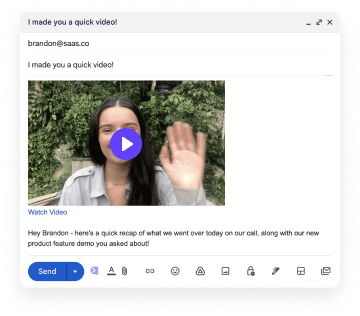Video marketing is undoubtedly one of the most effective types of digital marketing which is why it is being used so commonly by businesses and creators of all types. Videos allow marketers to deliver information in a dynamic and engaging way.
The only issue with videos is that they can still be difficult to understand for viewers whose first language isn’t English. Moreover, non-English speakers can’t use Google Translate to translate the video the way they would translate an article. Besides, according to research, 80% of viewers are more likely to watch the whole video when subtitles are available.
Luckily, there is a simple solution for video creators and marketers – subtitles. Adding subtitles to videos is easy and simple, so here is a complete guide to writing and adding subtitles to videos.
1. Choose Your Method
First, you will need to choose the method you will be using to write your subtitles. If you already have a video script, it will be easy to create them. But if you are working with the video itself, you will likely need to type out each subtitle manually which could take more time and effort. Yet, it will be worth it in the end because manually writing your subtitles will ensure that you don’t miss any important sentences.
Alternatively, you can use software that will automatically create subtitles from the video. Of course, you will still need to edit these subtitles, but using such software will still dramatically speed up the process of creating the subtitles in the first place. If you are worried that the tool might miss some phrases or sentences, then it’s best to choose manual subtitle creation. But if you don’t mind double-checking the subtitles a few times, then you should definitely go for the software first.
2. Consider Outsourcing
Outsourcing is definitely an option when it comes to writing and adding subtitles to your videos. If you don’t have the right skills or experience, you will benefit from hiring experienced writers from the writing services reviews site Best Writers Online who will create the subtitles for you. Such professionals will be able to deliver the subtitles for you in the timeframe you set for them while ensuring that there are no mistakes in the subtitles.
According to predictions, global outsourcing expenses could be as high as $731 billion in 2023, so it is obvious that there are already numerous companies taking advantage of outsourcing. As long as you find a reliable outsourcing agency (or independent writers who offer services for outsourcing), you can be sure that you will get accurate subtitles that you can then add to your videos.
3. Create the Subtitles
Once you have decided how you will be creating the subtitles, you will need to actually create them. If you decided to write them yourself, then you will need to do so. If you decided to first use special software to automatically generate subtitles, then do just that. If you decided to outsource the creation of your subtitles, then find a writing agency or an independent writer and order the creation of your subtitles.
In case you are creating the subtitles yourself, try not to stop while writing them. This method is somewhat similar to actual writing. If you keep going back every time you write a sentence or two, then your progress will be very slow. This is why it’s best to first write the subtitles for the entire video and only then go back to edit them which will be the next step in the process.
4. Edit Your Subtitles
Now that your subtitles are written, you can edit them. Obviously, this step only applies if you are working on the subtitles yourself rather than outsourcing their creation. If you wrote the subtitles yourself manually, then you will need to edit the grammar, spelling, and punctuation mistakes. You can use a tool like Grammarly to help you during the editing. Then, you can turn on the video again to check that you didn’t miss any phrases or sentences.
If you first used special software to automatically generate the subtitles, then you will now need to edit them (also for grammar, spelling, and punctuation errors). Likewise, you will need to turn on the video to check that everything is included. The process is quite similar in both the manual and the automatic approach, but the second method will likely be faster overall. Ultimately, it’s a matter of personal preferences.
5. Proofread Again
After you already edited your subtitles, it’s best to take the extra step to proofread them again. It is a good habit to check your texts several times – and this also applies to subtitles. If you proofread your subtitles multiple times, you will definitely eliminate any and all linguistic errors they could have. Moreover, you can also let your teammates read the subtitles too before you and them to the videos. A pair of fresh eyes might see the mistakes you didn’t notice before.
Another reason why you should proofread your subtitles again is that you might decide to add extra comments or explanations in some places. For instance, if there is a term that you don’t explain in the video that your audience might not understand, you could add its explanation in the subtitles. You can also add some comments that could be somewhat like the author’s notes here and there that will add a personal flair to your video.
6. Translate the Subtitles
There are different reasons why you would want to add subtitles to your videos, but perhaps the most common one is to reach a wider audience. Essentially, this means that you will need to translate your subtitles into different languages. You can first create subtitles in English and then use them to create all the other subtitles in different languages. This way, you can be sure that you don’t miss any sentences when creating all these options for your viewers.
If you don’t speak multiple languages, then you can hire professional writers and translators from the writing agency Writing Judge who will translate your subtitles for you. Opt for the most widely-spoken languages first (e.g. Spanish, Mandarin, French). Alternatively, select the languages that will be relevant to your target audience, even if they are less common overall.
7. Add the Subtitles
Last but not least, add subtitles to your videos. If you are only adding English subtitles, you can add them directly to your videos. But if you want to offer subtitles in multiple languages, then it’s best to use the caption options that are usually available on major video distribution platforms like YouTube.
When adding subtitles to your videos, make sure that they appear at the right time throughout. If the subtitles appear before or after what is spoken in the video, then your viewers may be confused. Also, make sure that there is enough time for viewers to read a phrase or sentence before they are shown the next one.
Conclusion
At the end of the day, how you write and add your subtitles depends on your own preferences, but if you are a beginner, it’s best to follow this guide. You can either add English subtitles or translate your video and add subtitles in other languages to help non-English speakers enjoy your videos.
Author bio:
Frank Hamilton has been working as an editor at essay writing service Trust My Paper. He is a professional writing expert in such topics as blogging, digital marketing and self-education. He also loves traveling and speaks Spanish, French, German and English.



